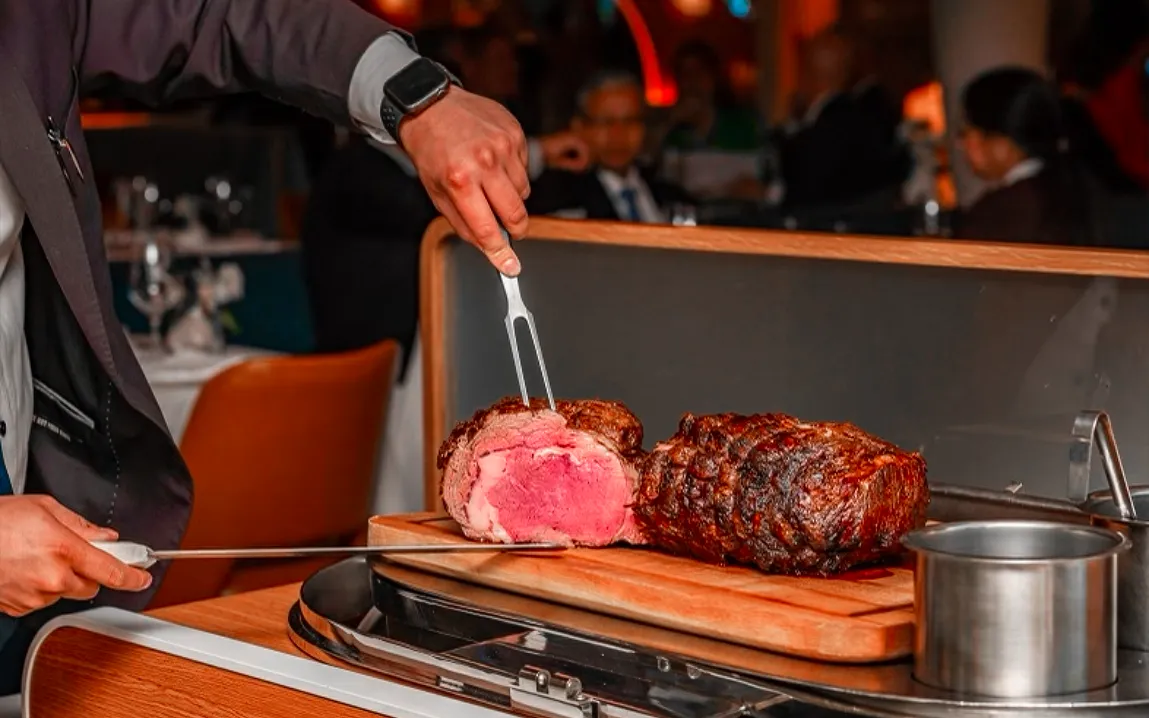Learn how to make restaurant-quality prime rib in your own kitchen using a series of step-by-step instructions, pro tips and techniques to achieve tender juicy perfection every time.
Restaurant-Quality Prime Rib -How to Make at Home A Step-by-Step Guide
A prime rib, when perfectly cooked at home, feels like a daunting task to master, but with proper preparation and techniques, restaurant-quality results can be obtained right in your kitchen. Be it a holiday feast or a special occasion dinner, the perfectly executed prime rib is sure to leave your guests speechless. Here’s an elaborate guide to help you master the art of prime rib, inspired by professional chefs and cooking experts.
Choosing the Right Cut
A great prime rib begins with a great cut of meat. Prime rib, also called standing rib roast, is a cut from the primal rib section of the cow. Here’s what to look for:
Marbling: Go for a cut that is well-marbled to provide flavor and tenderness. USDA Prime Grade is the best quality but can be expensive. USDA Choice is more affordable.
Bone-In or Boneless: Bone-in cuts are better for flavor and even cooking, but boneless cuts are easier to carve.
Size Matters: Use about one pound per person, knowing that leftovers are great for sandwiches or hash.
Preparation: Seasoning and Resting
Seasoning and resting your prime rib are what make the difference between a flavorful crust and a tender interior.
Dry Brine for Flavor: Generously coat the roast with kosher salt and freshly cracked black pepper. For added flavor, rub in minced garlic, rosemary, and thyme. Let it rest uncovered in the refrigerator for 24 to 48 hours.
Bring to Room Temperature: Let the roast sit at room temperature for at least two hours before cooking. This will ensure even cooking.
Cooking Techniques
Consistency and control are essential to achieving a perfectly cooked prime rib. Here’s a tried-and-true method used by chefs:
The Reverse Sear Method:
Slow Roast: Place the roast on a wire rack in a roasting pan. Preheat your oven to 250°F (120°C). Cook it until it reaches an internal temperature of 120°F (49°C) for rare, 130°F (54°C) for medium-rare, or 140°F (60°C) for medium. To get an accurate reading, use a meat thermometer.
Let the Roast Rest: Take the roast out of the oven and loosely tent it with foil for 20-30 minutes to allow juices to redistribute.
Finish with High Heat: Preheat your oven to 500°F (260°C) and place the roast back in the oven for 5-10 minutes to develop a crispy crust.
Alternative Options
Smoking: For that smoky finish.
Sous Vide: Cooking under precise temperature control and finishing with a sear.
Carving and Serving
Let it sit for at least 20 minutes after cooking to be juicy.
Slice it in thick, even portions across the grain using a carving knife.
Serve with au jus, horseradish sauce, or red wine reduction for that fine restaurant feel.
Pro Tips to Success
Use a Thermometer: Guesswork destroys a prime rib. That’s where a digital meat thermometer comes in for accuracy.
Invest in Quality Ingredients: High-quality beef and fresh herbs make a noticeable difference.
Don’t Skip the Resting Period: This step is crucial for juicy, tender meat.
Pairings and Sides
Serve the prime rib with traditional sides like fresh Caesar salad, roasted vegetables, or creamy mashed potatoes. Red wine lovers can have the robust red, either a Merlot or Cabernet Sauvignon, go well with it.
You can prepare restaurant-quality prime rib at home with a little experience and the right method. Your prime rib will surely be the centerpiece of a memorable dinner if you follow these instructions.



